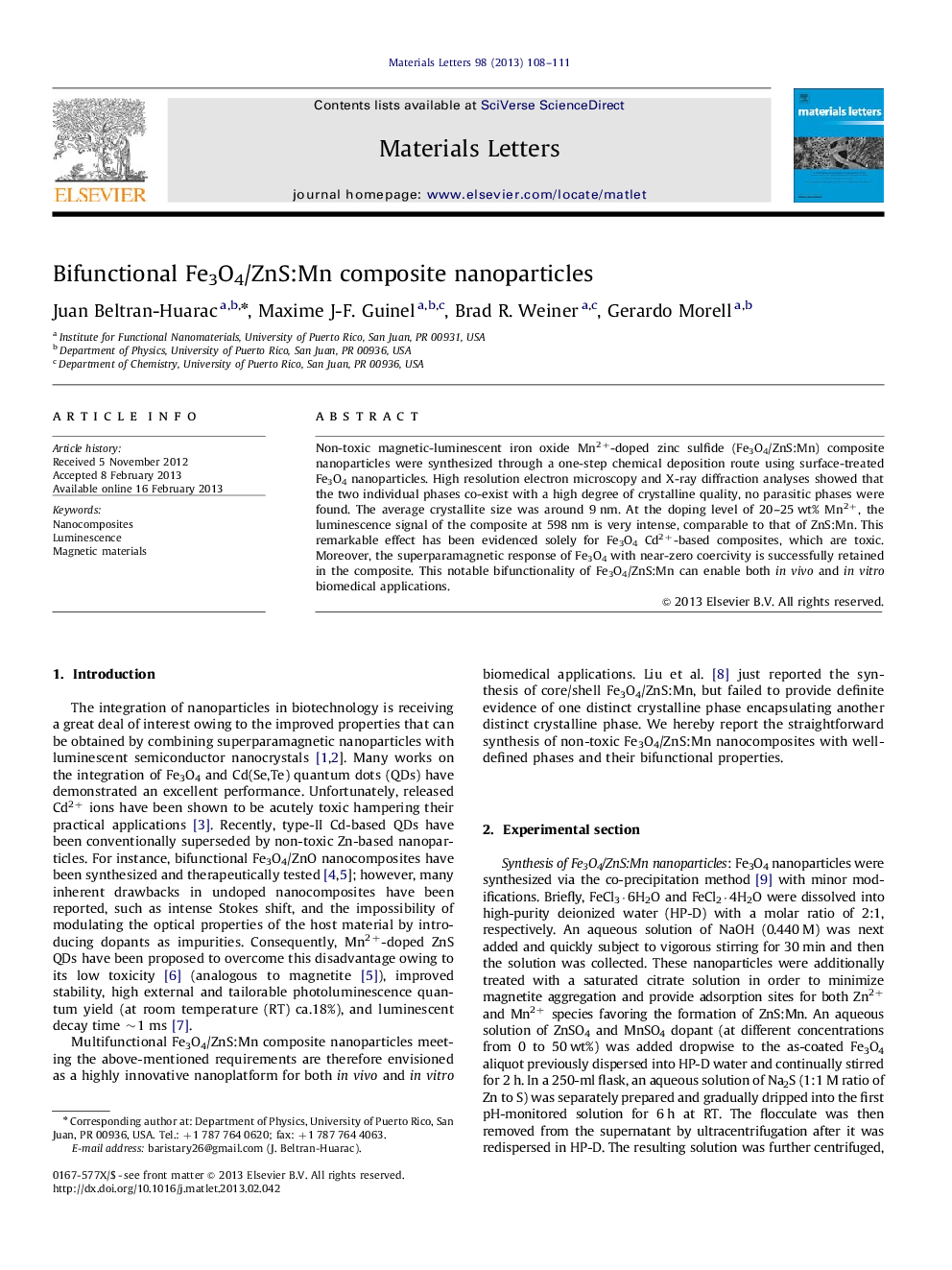| Article ID | Journal | Published Year | Pages | File Type |
|---|---|---|---|---|
| 1645464 | Materials Letters | 2013 | 4 Pages |
Non-toxic magnetic-luminescent iron oxide Mn2+-doped zinc sulfide (Fe3O4/ZnS:Mn) composite nanoparticles were synthesized through a one-step chemical deposition route using surface-treated Fe3O4 nanoparticles. High resolution electron microscopy and X-ray diffraction analyses showed that the two individual phases co-exist with a high degree of crystalline quality, no parasitic phases were found. The average crystallite size was around 9 nm. At the doping level of 20–25 wt% Mn2+, the luminescence signal of the composite at 598 nm is very intense, comparable to that of ZnS:Mn. This remarkable effect has been evidenced solely for Fe3O4 Cd2+-based composites, which are toxic. Moreover, the superparamagnetic response of Fe3O4 with near-zero coercivity is successfully retained in the composite. This notable bifunctionality of Fe3O4/ZnS:Mn can enable both in vivo and in vitro biomedical applications.
► Fe3O4/ZnS:Mn nanocomposite were synthesized by a facile chemical deposition route. ► A threshold of Mn2+ ion 20–25% was found which optimizes the composite PL signal. ► The Fe3O4 superparamagnetic feature was successfully retained by the composite. ► The performance of this non-toxic composite is comparable to that of Cd-based one. ► This nanoplatform can be used as a drug delivery matrix for clinical applications.
